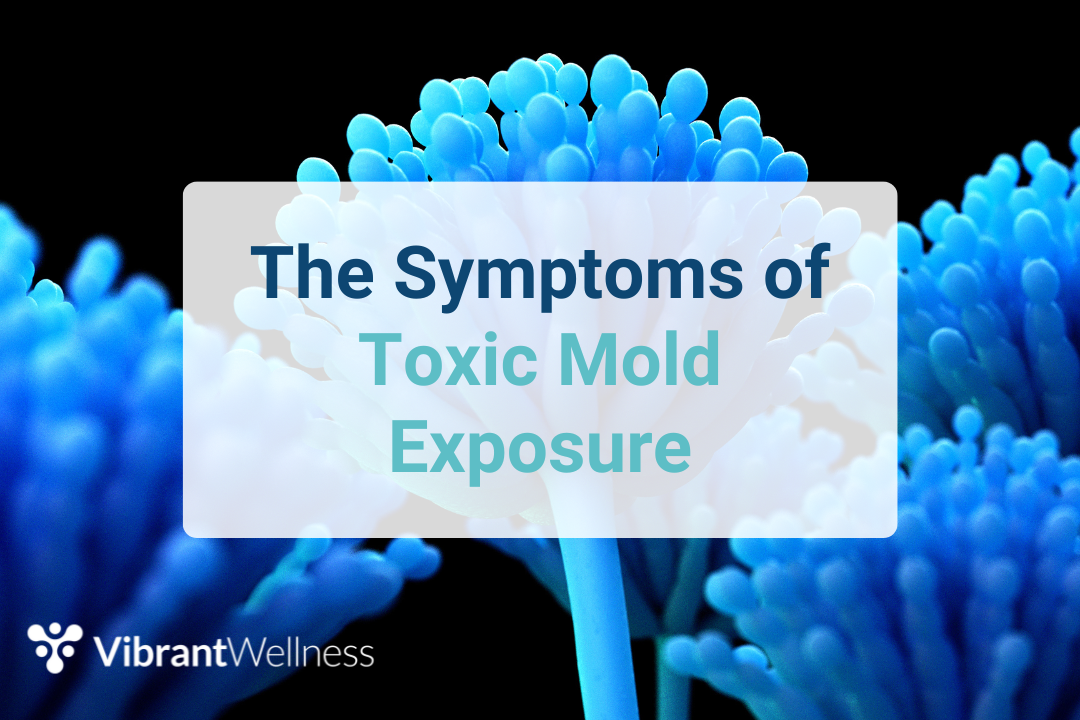Introduction to PFAS Chemicals
Are your patients carrying a heavy toxic burden?
Environmental toxins and chemicals like perfluoroalkyl and polyfluoroalkyl substances (PFAS) can build up and persist in the body for decades, leaving your patients susceptible to infections and even more toxins.
Of particular concern are PFAS chemicals, which are highly resistant to environmental degradation, widely used, and present in drinking water, the environment, and a range of products.
An estimated 18-80 million Americans receive tap water with ten nanograms per liter of PFOA and PFOS.1
This PFAS Chemicals guide will provide an overview of PFAS, show how to use precision testing to measure exposure levels, and introduce strategies for preventing and reducing PFAS-induced toxic burden.
Read on to learn how to help your patients identify and address PFAS and protect their health.
What are PFAS?
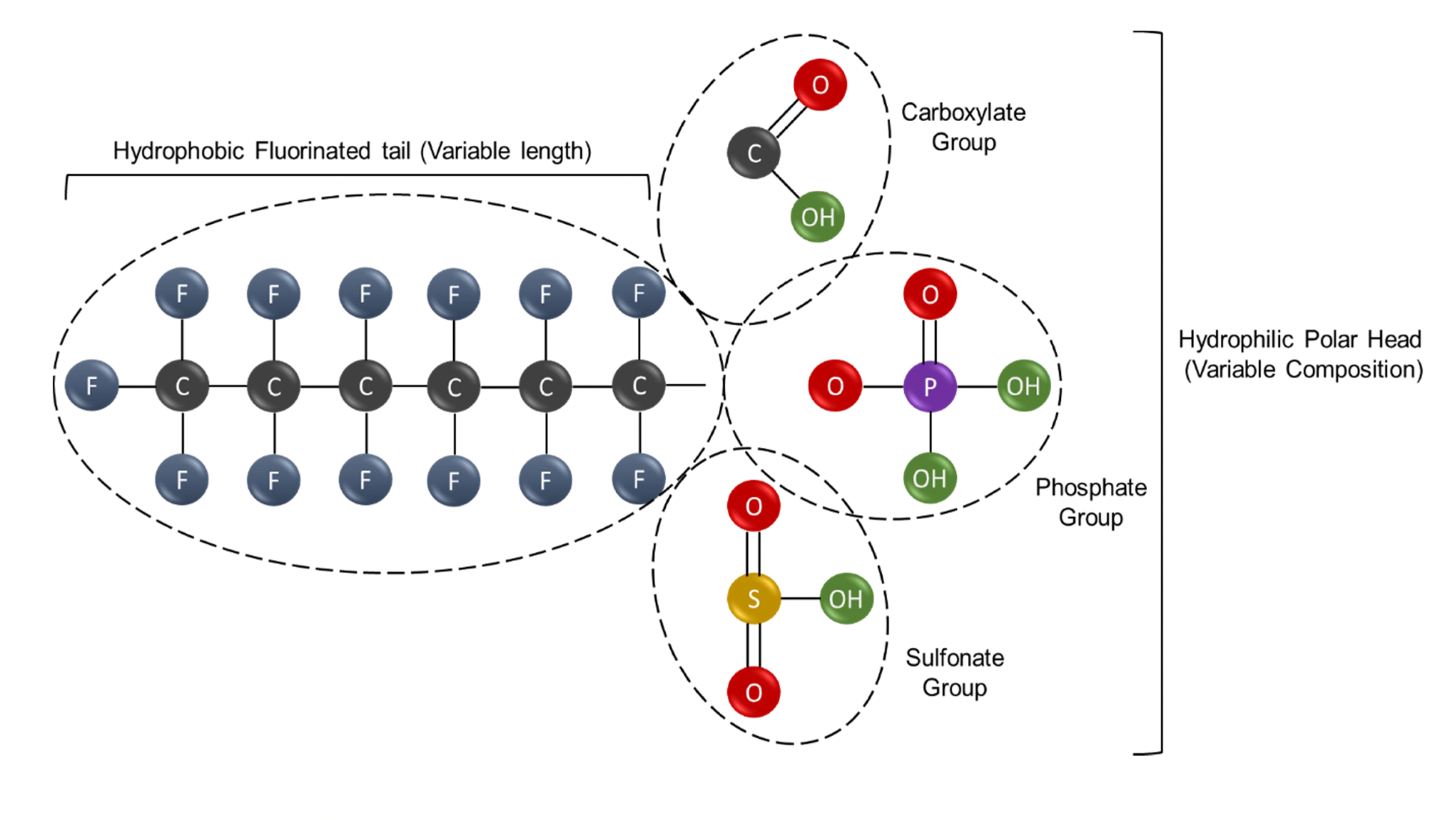
PFAS are persistent, man-made chemicals resistant to environmental degradation, and because they are so widely used, humans are highly exposed to them daily.
One NHANES biomonitoring study found PFAS in 97% of American adults and adolescents, while another study detected PFAS in 60% of children aged three to eleven.2
Types of PFAS: Long-chain vs. Short-chain
There are two distinct types of PFAS: long-chain and short-chain.
Long-chain PFAS have longer half-lives and greater bioaccumulation than short chains. Furthermore, long-chain PFAS:
- Are less likely to dissolve in water
- Can be transported in the air by particulate matter
- Are more likely to be found in soil, groundwater, and plant roots
- And are more likely to be found in blood
In contrast, short-chain PFAS:
- May pose more treatment challenges
- Are more volatile and potentially more reactive
- Disperse farther across the environment
- Are more likely to dissolve in water
- Commonly found in surface water and plant shoots
- And are more likely to be found in urine
Although long-chain PFAS are often positioned as more toxic than short-chains, there is a lack of scientificconsensus on this.
Ultimately, both short- and long-chain PFAS and potentially harm human health.
PFAS Exposure
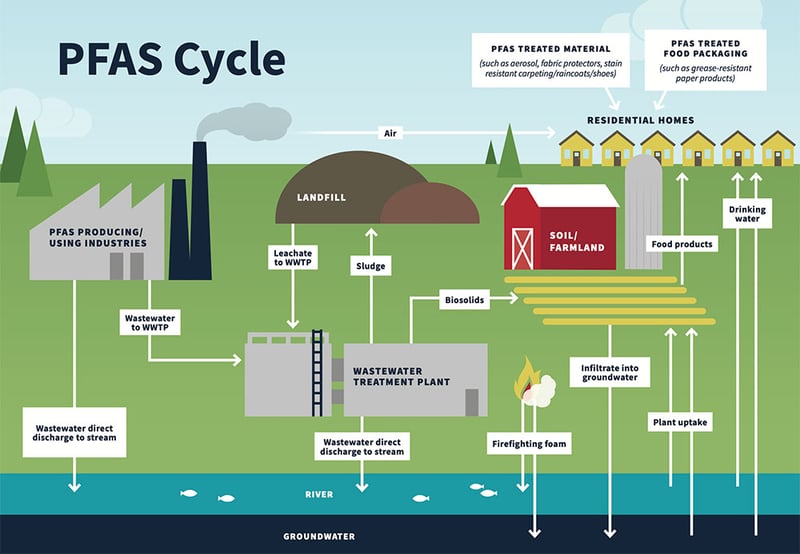
So, how are we exposed to PFAS?
The number one source of exposure to the chemicals is contaminated drinking water. PFAS can also be found in many manufactured and consumer goods, such as:
- Non-stick cookware coatings
- Stain-resistant carpets
- Water and stain-resistant clothing
- Grease-fighting cleaning products
- Adhesive packaging
- Heat-resistant firefighting foams
- Food product packaging
Additionally, PFAS exposure occurs directly from the environment through the air, water, and soil. Factories that produce consumer goods containing PFAS release the chemicals into the air during production, and toxins then make their way into our water sources and landfills.
Explore this interactive PFAS map to find known contamination sites near you.
Potential Harms & Toxic Effects of PFAS
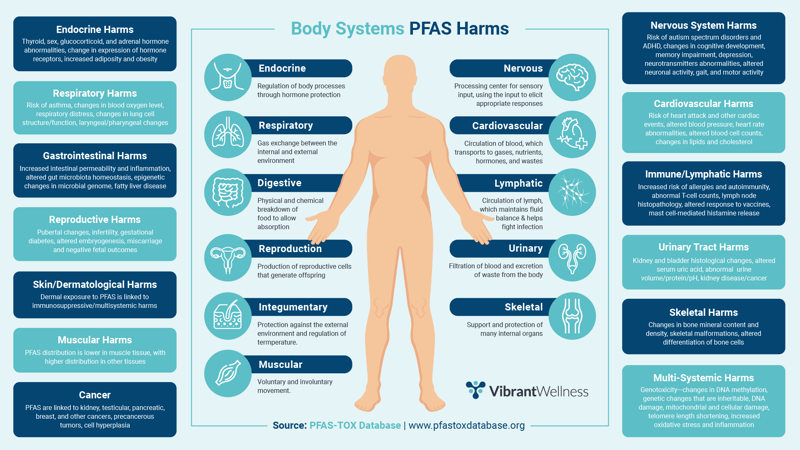
- Endocrine
- Respiratory
- Gastrointestinal
- Reproductive
- Muscular
- Nervous System
- Cardiovascular
- Immune/lymphatic
- Urinary tract
- Skeletal
Toxic effects of PFAS include:
- Immune toxicity
- Endocrine disruption
- Systemic inflammation
- Oxidative stress
- Cellular toxicity
- Genotoxicity
Who May Benefit from PFAS Testing?

- Thyroid Disease
- Diabetes
- Infertility/preconception
- Hyperlipidemia
- Liver Disease
- Kidney Disease
- Ulcerative Colitis
- Cancer
Additionally, patients who live in areas with known PFAS contamination (near airports or military bases) or who may be exposed to PFAS through their work (such as firefighters) face increased exposure risk.
Limiting PFAS Exposure
.jpeg?width=800&height=300&name=2022-11%20-%20Intro%20to%20PFAS%20-%20Blog%20Graphics%20(1).jpeg)
It’s impossible to completely prevent PFAS exposure, but there are a few strategies patients can implement to minimize it.
The number one source of contamination is water; by using filters to lower the PFAS content in home water supplies, patients can significantly limit exposure. Recommended filtration methods, in order of reliability, include:
- Reverse osmosis systems, which reduce short and long-chain PFAS levels below detection levels on average.
- Under-sink dual/triple-stage systems, which include pre-filter plus activated carbon, are the next best choice for removing both short and long-chain PFAS.
- Single-stage activated carbon filters in refrigerators, faucets, and filtered pitchers remove approximately 50-70% of long-chain PFAS but are less effective at eliminating short-chains.
The following tips will help patients limit other sources of PFAS exposure:
- Limit fast food and takeout containers by eating at home
- Avoid products with ingredients containing the words “fluoro” or “perfluoro”
- Replace non-stick pans with stainless steel or cast iron
- Avoid stain-resistant products such as stain-resistant carpeting and clothing
Additionally, patients can reduce other toxins that may be in food by following a detox food plan.
Measuring PFAS Exposure with Advanced Testing
PFAS testing will indicate the levels of the chemical metabolites in the body, enabling you to:
- Identify PFAS toxicity
- Reveal the underlying causes of a disease or an individual’s susceptibility to diseases
- Uncover the root cause of environmentally induced toxicity
- Establish risk recognition
- Enable solutions and interventions that will enhance toxic substance elimination and promote healing
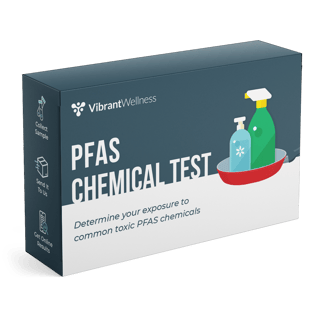
The PFAS Chemical Test utilizes mass spectrometry and liquid chromatography to detect and identify 21 short-chain and long-chain PFAS analytes commonly found in humans.
Patients can perform the PFAS urine test in the comfort of their homes, helping them assess their toxic burden status so they can implement preventative strategies to reduce exposure and overall toxic burden.
In addition to PFAS and Toxic Burden testing, use this Toxicity Questionnaire to assess their total toxic burden further.
Combining these strategies with advanced toxicity testing can help your patients reduce their toxic risk so you can create a personalized detox and wellness plan to achieve better health.
References
1. Andrews, D. Q., & Naidenko, O. V. (2020). Population-wide exposure to per- and polyfluoroalkyl substances from drinking water in the United States. Environmental Science & Technology Letters, 7(12), 931-936.
2. https://www.atsdr.cdc.gov/pfas/health-effects/us-population.html
Regulatory Statement:
The general wellness test intended uses relate to sustaining or offering general improvement to functions associated with a general state of health while making reference to diseases or conditions. This test has been laboratory developed and its performance characteristics determined by Vibrant America LLC and Vibrant Genomics, a CLIA-certified and CAP-accredited laboratory performing the test. The PFAS Chemical Test has not been cleared or approved by the U.S. Food and Drug Administration (FDA). Although FDA does not currently clear or approve laboratory-developed tests in the U.S., certification of the laboratory is required under CLIA to ensure the quality and validity of the tests.
 By
By


